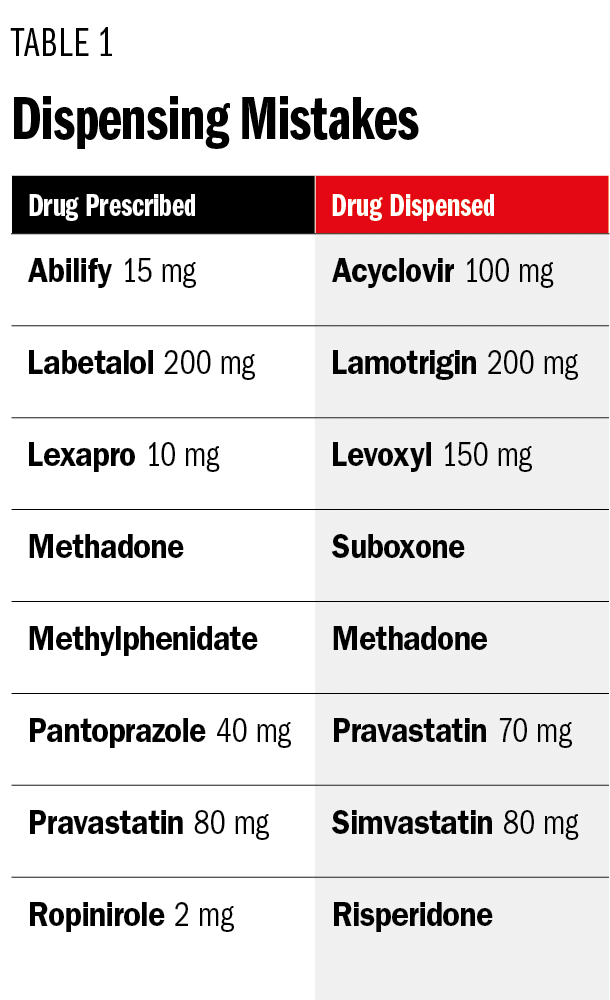The Most Common Pharmacy Penalties
The infractions that are most likely to get your pharmacy fined-and what you can learn from them.

Table 1: Dispensing Mistakes; Click to View

Liability insurance is like every other kind of insurance-you hope you never have to use it, because it usually means something has gone wrong.
For pharmacists, when something goes wrong, chances are it’s giving a patient the wrong dose or wrong drug-but mistakes in the pharmacy go far beyond that.
That’s according to the 2nd edition of the Pharmacist Liability Claim Report from healthcare insurance companies CNA and HPSO. The report analyzes claims over several years, from January 1, 2012 through December 31, 2016, that resulted in at least a $1 payment. Claims were included regardless of when they were filed, but must have closed during that time period.
Trending: Generic Drugs 101: What Pharmacists Need to Know
Overall, the report looks at 184 closed claims. This is compared to the first edition of the report, released in 2013, that tracked claims over a 10-year period from January 1, 2002 to December 31, 2011. In that 2013 report, just 162 claims were closed-despite a study period twice that of the second edition.
The total amount incurred in the 2nd edition is $25 million with an average claim of $124,407, compared with a total of $18 million and an average of $101,269 in the 1st-an increase of 22.8%.
Breaking Down the Numbers
So, where do all of these claims come from? The vast majority of claims are against pharmacists (96.2%), compared to just 3.8% against pharmacy technicians. According to the report, this is likely due to the fact that technicians operate under the supervision of pharmacists, and “therefore, the lower severity of pharmacy technician claims is commensurate with the scope of their licensure.”
The report also breaks down where those pharmacists worked and the average claims in each of those settings: the largest claims came from hospital pharmacies, with an average claim of $273,338 (more than twice the overall average of claims). The lowest average comes from pharmacists and technicians working in homecare environments, with an average payout of just $5,063.
The most common pharmacy types for claims were, perhaps unsurprisingly, from independent or individually-owned pharmacies (55.4%), compounding specialty pharmacies (17.9%), and national/regional chain pharmacies (12.0%).
Read More: Genetic Variations Predispose COPD Susceptibility
And what were these claims for?
The most expensive claim-though also the most infrequently reported-was failure to identify overdosing with an average expense of $544,600. Other claims with higher-than-average expenses include compounding calculation and/or preparation errors ($324,819), libel/slander ($300,000), and failure to provide instructions ($275,092), to name a few.
Pharmacy Mistakes and Why They Happen
Perhaps the biggest takeaway from the report, however, is the most common claims. By far, the most common claims were the result of the wrong drug (36.8%) and wrong dose (15.3%).
According to the report, a major reason for this is the problem of sound-alike and look-alike drugs (Table 1). Failure to separate out sound-alike drugs using methods like color separation and tall man lettering accounts for 15.1% of wrong drug dispensing errors. In one claim, a pharmacist dispensed minoxidil instead of methotrexate, resulting in the patient’s congestive heart failure and permanent partial disability.
Other risk factors include failure to check drug against label and actual prescription (9.8%) and failure to review prescription with patient (1.7%).